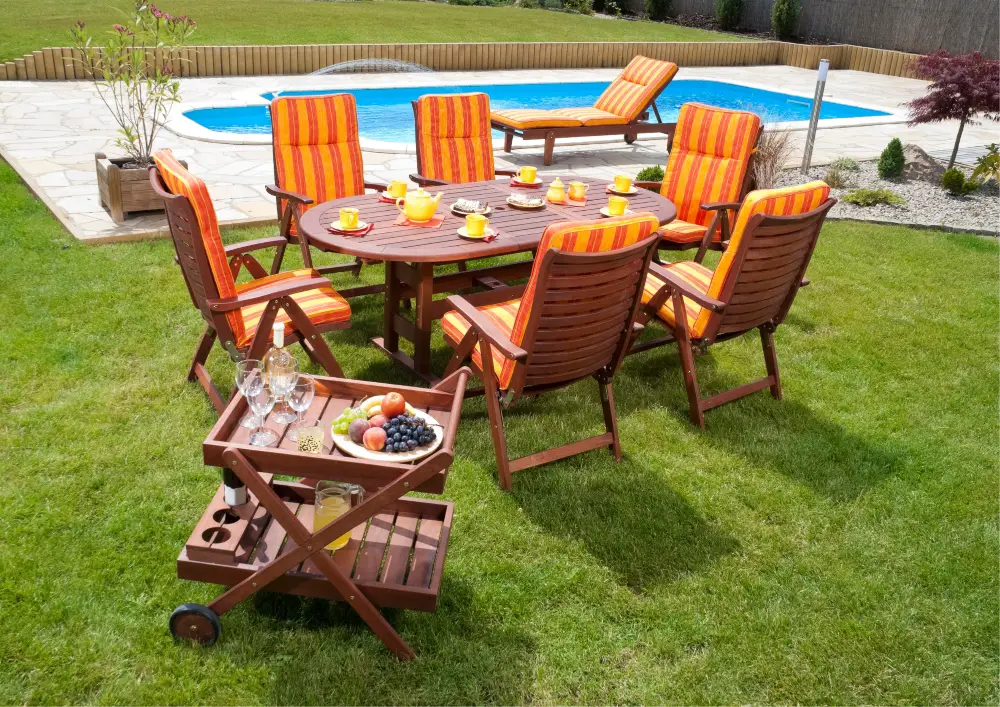Outdoor furniture gets dirty. Weather, birds, and dust can make it messy. Allowing the gunk on your furniture will quickly ruin the finish. Clean the chairs, tables, and other outdoor furniture makes them look better and last longer.
In this guide, you’ll learn how to clean different types of outdoor furniture. Let’s get started!
Contents
Types of Outdoor Furniture
Let’s start by looking at the types of outdoor furniture. Knowing the material helps you clean it the right way.
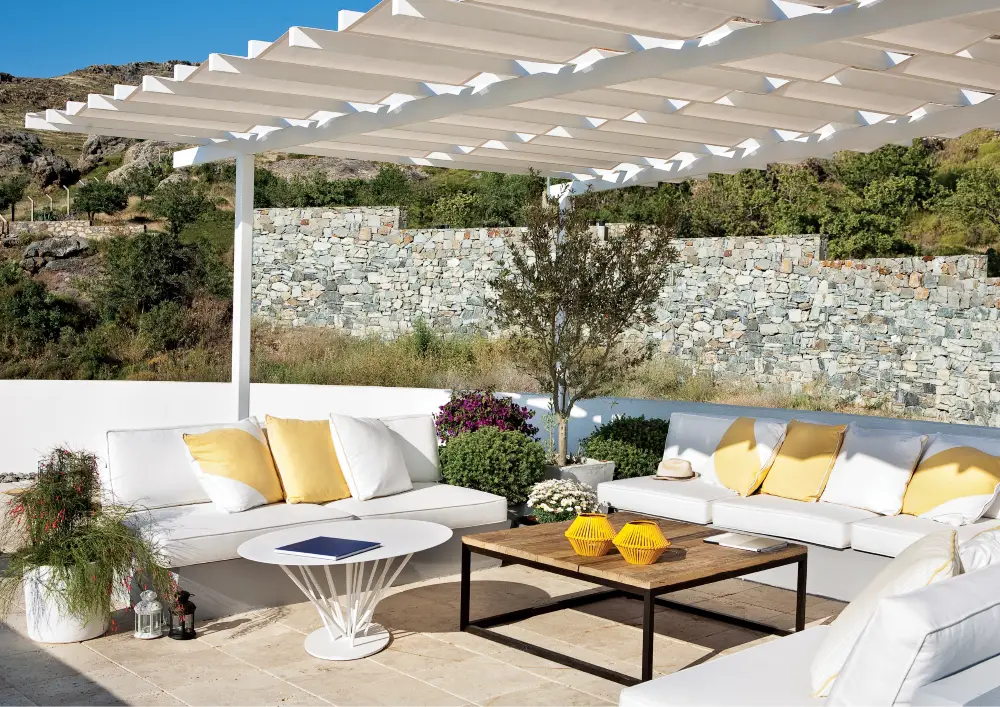
Wood Furniture
Wooden outdoor furniture is a classic choice that brings your outdoor space a warm, natural feel. Common types include teak, cedar, and pine. Each type has its unique features, such as teak’s high oil content, which makes it more durable, or cedar’s aromatic quality that repels bugs.
The big win for wood is its look and feel. Wooden furniture retains its beautiful look throughout the years. However, wood furniture requires more maintenance than other types to keep its beauty. It needs regular sealing to keep moisture and bugs away. And it can be expensive.
Metal Furniture
Metal furniture offers a modern, sleek look. Aluminium and wrought iron are the most common types you’ll find. Aluminium is highly resistant to rust, making it great for outdoor spaces. Wrought iron is heavier and has a more traditional, ornate design.
Metal is durable and can handle heavy rains. It’s easy to clean and generally low-maintenance. The downside? Aluminium can be too light and blow away in strong winds. Wrought iron can rust if not properly treated.
Plastic Furniture
Plastic outdoor furniture is the go-to for affordability and ease. Resin and polypropylene are popular materials in this category. They come in various colors and printed lanterns. There are also different plastic furniture, such as simple chairs and intricate lounges.
The big plus for plastic is its low cost and low maintenance. This type of furniture is easy to clean and will never rust. However, plastic can look cheap and may not be as durable as wood or metal. It can also fade and become brittle over time.
That’s a quick overview of the types of outdoor furniture. We will move on to the tools you need to clean them.
Cleaning Tools You’ll Need
Before diving into the cleaning process, let’s prepare our tools. Having the right tools makes the job easier and more effective.
Brushes and Sponges
Brushes and sponges are your main tools for scrubbing away dirt and grime. They come in various forms for different tasks:
- Soft-bristle brushes: for delicate surfaces
- Stiff-bristle brushes: for tougher stains
- Sponges: for gentle cleaning
You need these to get into the nooks and crannies of furniture. Without good brushes and sponges, you can’t effectively remove dirt.
Soap and Detergents
Soap and detergents break down grime and make it easier to remove. Each type of furniture needs a specific cleaner:
- Mild soap: for wood and plastic
- Dish detergent: for metal
Choosing the right soap is crucial. The wrong one can damage your furniture’s surface.
Water Hose or Bucket
You’ll need water to rinse off the soap and dirt. A hose is great for a quick, even rinse. A bucket works, too, but it takes more time. Water is essential to the cleaning process. Without it, soap and grime stay on the furniture.
Specialty Cleaners
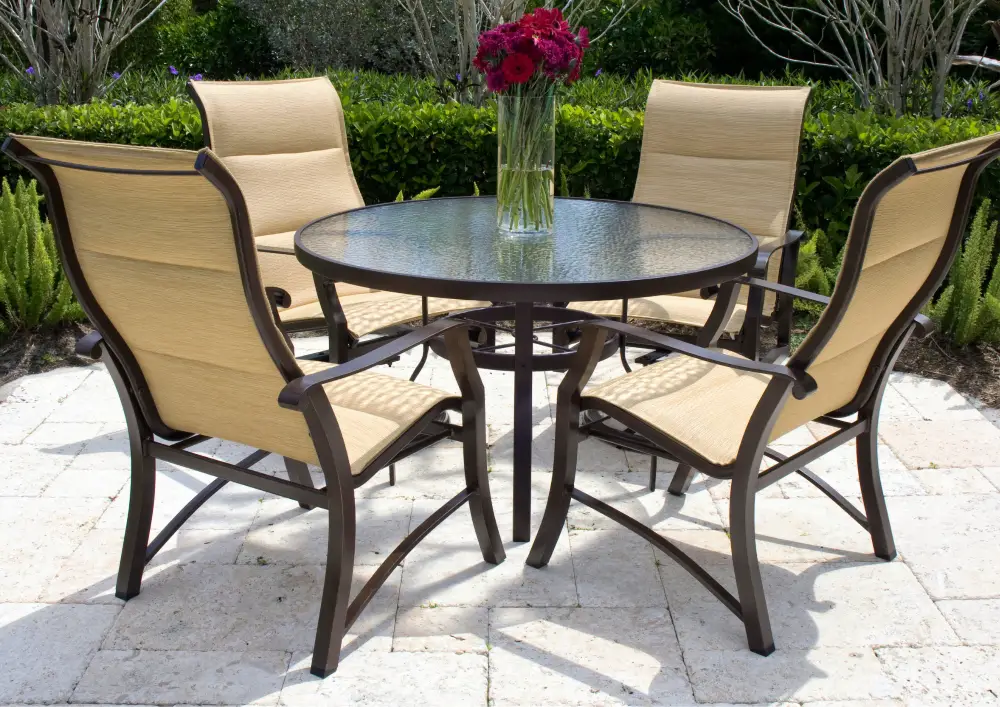
Some furniture needs special cleaners. These include:
- Teak cleaner: for teak wood
- Rust remover: for metal
Different materials require specific care. Specialty cleaners are made to treat unique issues without damaging the furniture.
Protective Gear
Safety is important. When using strong cleaners, protect yourself. You might need:
- Gloves: to protect your skin
- Masks: for strong fumes
Protective gear keeps you safe from chemicals and irritants.
Cloths and Towels
After rinsing, you’ll need to dry the furniture. Cloths and towels help with this. They also buff surfaces to a shine. Keep a variety on hand:
- Microfiber cloths: for gentle drying
- Cotton towels: for heavy-duty work
So, there you have it. These are the tools to get your outdoor furniture looking new again. Next, we’ll dive into how to clean each type of material.
Cleaning Wood Furniture
Cleaning wood furniture is different from other types. It requires special care to keep it looking its best. Let’s dive into the steps and tips for getting your wood furniture clean and fresh.
Identify the Type of Wood
The first step in cleaning wood furniture is knowing what kind of wood you have. Popular types include teak, cedar, and pine. Each type of wood has unique cleaning needs. For example, teak has high oil content, which makes it more durable. Cedar has a natural aroma that repels bugs.
Knowing your wood type helps you choose the right cleaning solution and technique. It also informs how often you should clean and reseal the furniture.
Preparation Steps
Before you start cleaning, getting everything ready is key. Follow these steps to prepare:
- Move furniture to an open area for easy access.
- Take off cushions and any fabric pieces to avoid water damage.
- Collect your cleaning tools: brushes, soap, and a water source like a hose or bucket.
- Sweep or dust off loose dirt from the furniture.
- Check the weather; a sunny day is best for quick drying.
Cleaning Solution Choices
Choosing the right cleaner is important. Here are some options based on wood type:
- Mild Dish Soap: Good for most wood types. Mix with warm water.
- Teak Cleaner: Specialized for teak wood, contains ingredients that nourish the wood.
- Wood-Specific Cleaner: Some cleaners are made just for cedar or pine.
- Vinegar and Water: A natural choice for tougher grime.
- Avoid Bleach: It can discolor and damage the wood.
Scrubbing Technique
Scrubbing your wood furniture needs a careful approach. A soft-bristle brush usually works best for most wood types. Consider using a sponge to prevent surface damage for softer woods like pine or cedar.
When scrubbing, go with the grain of the wood to avoid scratching. You can mix water and vinegar or a specialized wood cleaner for stubborn stains or mildew. To avoid oversaturation, apply the cleaner to the brush, not directly to the wood.
Scrubbing in circular motions can help lift embedded dirt. First, it’s always good to test a small, hidden area to ensure the cleaner won’t discolor or damage the wood.
Rinsing and Drying
After scrubbing, rinsing becomes the next essential step. Using a garden hose in a gentle setting is an effective way to rinse the furniture. Avoid using a pressure washer, as the intense water flow can erode the wood.
A clean cloth soaked in water can also help remove any leftover cleaner. Drying is crucial for wood furniture. Use a towel to blot off excess water. Let the furniture air dry in the sun for several hours if possible. Ensure it’s thoroughly dry before storing or covering it to prevent mold and mildew growth.
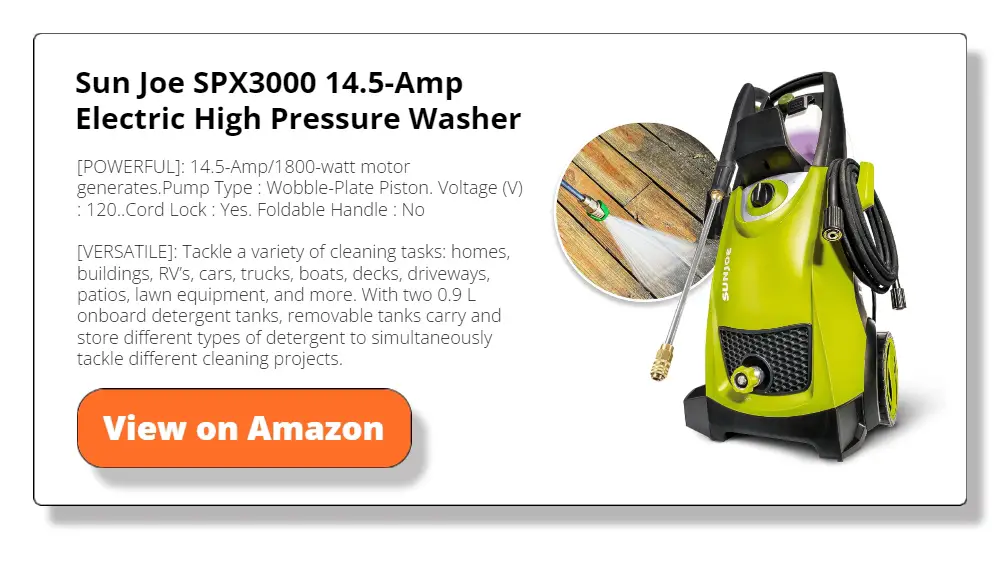
Sealing and Protecting
Once your wood furniture is clean and dry, it’s time to protect it. A sealant or wood oil can help keep the elements at bay. For hardwoods like teak or oak, teak oil provides deep penetration and excellent protection. For softer woods, a standard wood sealant will do.
Before applying, ensure the surface is completely dry and dust-free. Use a paintbrush for an even application, going along the grain of the wood. Allow the sealant or oil to dry as per the manufacturer’s instructions. A second coat may be necessary for better protection.
Now that we’ve reviewed the basics, you should be well-equipped to clean your wood outdoor furniture. Follow these guidelines, and your furniture will not only look better, but it will also last longer.
Cleaning Metal Furniture
Cleaning metal furniture has its own set of rules. Metal is durable but can show signs of wear and rust over time. Here’s how to keep your metal outdoor furniture looking its best.
Preparation Steps for Metal Furniture
Before getting started, set up your workspace with the following steps:
- Move your furniture to a flat, well-drained area. Puddles can lead to rust.
- Remove non-metal parts like cushions or glass tops to protect them from cleaners.
- Inspect for rust spots or loose screws and make a note to treat them later.
- Put on your protective gear—gloves and perhaps even a mask if you’re using strong cleaners.
- Make sure your cleaning tools are close by. You’ll need different brushes, clothes, and your chosen cleaning solution.
Identify the Type of Metal
The first thing to do is identify what type of metal your outdoor furniture is made of. The type of metal dictates the cleaning solution you should use. Here are the common types and their recommended cleaners:
Aluminium – Lightweight and rust-resistant aluminium furniture benefits from mild dish soap and water. Avoid acidic cleaners as they can discolor the metal.
Wrought Iron – Heavier and more traditional wrought iron furniture can handle stronger cleaners like a mixture of water and white vinegar. Be cautious about using something too abrasive, as it can remove the paint.
Stainless Steel – This type of furniture is strong and doesn’t rust easily. A gentle detergent mixed with water works well, or you can buy specialized stainless steel cleaners.
Cast Iron – Similar to wrought iron but more brittle. Use mild dish soap or specialized cast iron cleaners to maintain its look.
Now, let’s talk about cleaning solutions.
Mild Dish Soap –: A universal choice for most metal types. Mix with warm water.
White Vinegar and Water – Effective for harder metals like wrought iron. Vinegar is acidic and can remove tough stains.
Specialized Cleaners – These are designed for metals like aluminium or stainless steel. They offer a deep clean and sometimes have protective qualities.
pH-balanced Cleaners – These are less acidic and ideal for metals like aluminium that can react to acidity.
Knowing the type of metal and the right cleaning solution is half the battle. This information helps you avoid damaging your furniture while achieving a deep clean.
Rinsing and Drying
After scrubbing, rinsing is the next critical step. Use a hose with a gentle spray setting to rinse off the soap or cleaner. You might want to use a soft cloth soaked in water for tighter spots. Remove all soap residues, as they can leave marks or cause corrosion.
Drying metal furniture is equally crucial. Water left on metal can cause rust or water spots. Use a dry towel to remove as much water as possible. If it’s sunny, leave the furniture to air dry. Consider using a hair dryer for small, intricate spaces for sensitive metals like wrought iron. Remember, moisture is metal’s enemy; thorough drying is a must to prevent rust.
Rust Treatment
Finding rust on your metal furniture can be disappointing, but it’s usually treatable. Begin by identifying the rust spots. Use a wire brush to gently scrub off the rust. For tougher spots, a rust remover can be applied.
Make sure to follow the instructions on the product label for best results. After treating rust spots, touching up the area with matching metal paint is advisable. Some paints have rust-resistant properties, providing an extra layer of protection.
Protective Coatings
Protecting your metal furniture is the final but vital step. A protective coating adds a barrier against the elements and reduces the chance of rust. For this purpose, consider using a branded coating like Rust-Oleum’s Clear Enamel Spray. This spray adds a glossy finish and provides excellent rust prevention.
Make sure the furniture is clean and dry before applying. Follow the instructions on the can for best results. It usually takes 24 hours to dry fully, and you may need a second coat for added protection.
By following these steps, your metal outdoor furniture will not only look good.
Cleaning Plastic Furniture
Cleaning plastic furniture comes with its own set of guidelines. Plastic is lightweight and versatile but can become discolored and brittle over time. Here’s how to keep your plastic outdoor furniture in top shape.
Preparation Steps
Before cleaning, make sure everything is set up for a smooth process.
- Place the plastic furniture on a grassy or soft surface to prevent scratching.
- Remove any attached cushions, pillows, or decorations to protect them from cleaning agents.
- Shake off or brush away loose dirt, leaves, and other debris.
- Check for areas of heavy staining or dirt buildup. You’ll need to focus on these spots.
- Gather your cleaning tools: a soft sponge or cloth, a bucket, and your chosen cleaner.
Identify the Type of Plastic
Knowing what kind of plastic you’re dealing with helps you choose the right cleaner and approach. Here are some common types of plastic used in outdoor furniture:
Polyethylene – The most common type, it’s durable and resistant to moisture and chemicals.
Polypropylene – Known for being tough and lightweight. It can be sensitive to certain chemicals.
PVC – This plastic is sturdy but can be prone to cracking in cold weather.
**Polystyrene or “Resin” – Often used for stackable chairs, this plastic is stiff and tough but can discolor over time.
Cleaning Solution Choices
The type of plastic dictates the cleaning solution. Here are some common options:
Mild Dish Soap – Safe for most plastics when mixed with water.
Vinegar and Water – Good for tougher stains but should be rinsed thoroughly.
Baking Soda Paste– Works well for stubborn stains but should not be used on softer or more delicate plastics.
Specialized Plastic Cleaners – Available in stores, these are formulated for specific types of plastic.
Scrubbing and Buffing
Cleaning plastic furniture is more than just a simple wipe-down. For scrubbing, start with a soft sponge or cloth. Rub the furniture surface using gentle circular motions. For dirtier spots, you can use a soft-bristle brush to get into the grooves. Never use a steel wool or abrasive pad; they can scratch and damage the plastic.
Buffing is the next step to restore the shine. Use a microfiber cloth and buff the surface in a circular motion. Some people use car wax to bring back the shine. A small amount on a cloth can go a long way. Buff until you see the original luster return. The aim here is to clean and rejuvenate the furniture, making it look almost as good as new.
Rinsing and Drying
After scrubbing and buffing, it’s crucial to rinse off any remaining cleaner. A gentle spray from a garden hose will usually do the job. For those without a hose, a bucket of clean water and a cloth can work, too. Make sure to remove all residues, as leftover cleaners can attract dirt.
Drying is just as important as rinsing. Unlike metal and wood, plastic furniture can handle a bit of moisture. However, to avoid water spots or streaks, it’s best to dry it off with a clean towel. Leave the furniture in a sunny spot to ensure it dries thoroughly.
UV Protection
Plastic furniture can fade and become brittle when exposed to the sun for too long. UV protection is essential for maintaining the color and durability of your furniture. Many stores offer UV-protective sprays designed for plastic furniture. These sprays form a protective layer that deflects harmful UV rays.
Apply the spray according to the instructions on the bottle, usually in a well-ventilated area and away from children and pets. Regular application, perhaps once a season, will help to extend the life and look of your plastic outdoor furniture.
Knowing the right cleaning solutions and methods ensures your plastic furniture looks fresh throughout the year.
Additional Tips
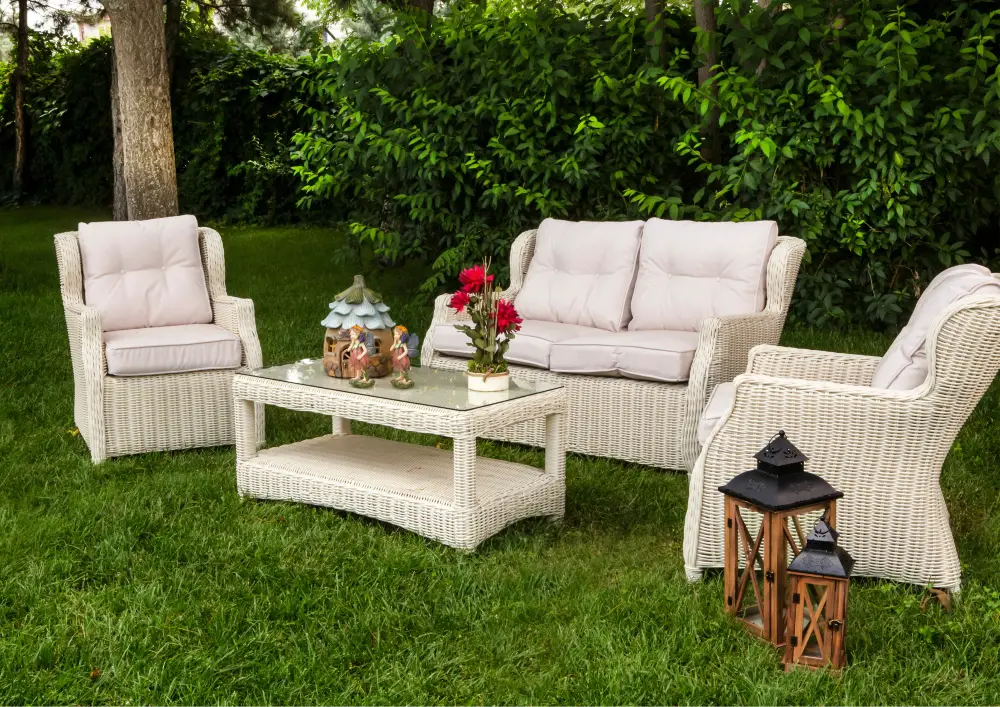
Keeping your outdoor furniture clean and well-maintained doesn’t have to be a chore. Here are some additional tips to help you go the extra mile in furniture care.
Spot Cleaning Between Deep Cleans
Keeping outdoor furniture in top shape doesn’t require a deep clean every time. Spot cleaning is a great way to maintain its appearance between those thorough cleans.
Use a dry cloth to clean dirt and grime for daily or weekly upkeep. You can also use a handheld vacuum to suck up leaves, pet hair, and other loose debris. If you see a spill or a stain, act quickly. Use a damp cloth and a mild detergent to clean the spot.
Make sure to rinse the area with clean water to remove soap residue. Consider keeping a small bottle of matching paint or finish for quick touch-ups for wood or metal furniture. Spot cleaning saves time and keeps your furniture ready for use.
Seasonal Storage Tips
When the seasons change, it’s vital to think about storing your outdoor furniture properly. For those with harsh winters, storing furniture indoors is ideal. Consider using water-resistant, high-quality covers that provide UV protection if you cannot place your furniture indoors. Before storing, clean your furniture to remove any lingering dirt or moisture, as these can lead to mold and mildew.
Make sure stackable chairs or collapsible tables are securely fastened to prevent wind damage. Keep your cushions or fabric objects dry and cool during rainy seasons. These seasonal storage steps ensure your furniture will be in great shape for the next outdoor season.
Eco-Friendly Cleaning Options
Being environmentally conscious while cleaning your outdoor furniture is easier than you might think. Instead of chemical-laden cleaners, opt for natural alternatives. A mixture of water and vinegar can clean most surfaces effectively. For tougher stains, a paste made from baking soda and water works well.
If you prefer store-bought options, look for biodegradable cleaners from plant-based ingredients. Even your cleaning tools can be eco-friendly. Choose brushes with natural bristles and cloths from sustainable materials like bamboo or organic cotton. Using a bucket to rinse furniture, rather than a hose, can also save water.
Warranty and Repair Information
When you invest in outdoor furniture, understanding the warranty can save you time and money. Many furniture pieces have a limited warranty covering defects and damages for a certain period.
Always keep your purchase receipt and warranty card in a safe place. Contact the manufacturer or retailer to know if they will cover the damages to your furniture. Remember, some companies offer free repairs or replacements. Others might require you to pay for shipping or labor costs for specific damages.
Doing DIY repairs could sometimes void the warranty, so it’s crucial to know the terms before attempting any fixes. Consider professional repair services if your furniture is out of warranty. Many issues like rust, broken slats, or loose screws can be fixed at a fraction of the cost of buying new furniture.
Safety Precautions
Cleaning outdoor furniture involves various cleaning solutions and tools, making safety precautions essential. Always read the labels and follow the manufacturer’s guidelines when using cleaning products. Some cleaners can harm your skin, eyes, or respiratory system. Protect yourself by wearing gloves, goggles, and a mask while cleaning your furniture.
Keep pets and children away from the cleaning area, especially using chemical-based solutions. Make sure to work in well-ventilated spaces. Fumes can be dangerous if inhaled. Also, when using electric cleaning tools like a pressure washer, be cautious about water exposure to prevent electrical shocks.
Always store your cleaning supplies safely and securely away from kids and pets. It’s better to be safe than sorry; following these precautions will make your furniture cleaning process safer and more efficient.
These tips will further help you extend the lifespan of your outdoor furniture.
Conclusion
Caring for outdoor furniture might seem daunting, but it doesn’t have to be. You can keep your furniture looking good with the proper care and tools.
Plus, being mindful of warranties and safety can save you hassle and risk. Investing in good care practices now means more seasons of comfort and enjoyment in your outdoor space.

